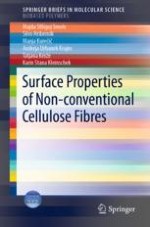2019 | Buch
Surface Properties of Non-conventional Cellulose Fibres
verfasst von: Prof. Dr. Majda Sfiligoj Smole, Dr. Silvo Hribernik, Dr. Manja Kurečič, Assist. Prof. Andreja Urbanek Krajnc, Dr. Tatjana Kreže, Dr. Karin Stana Kleinschek
Verlag: Springer International Publishing
Buchreihe : SpringerBriefs in Molecular Science
